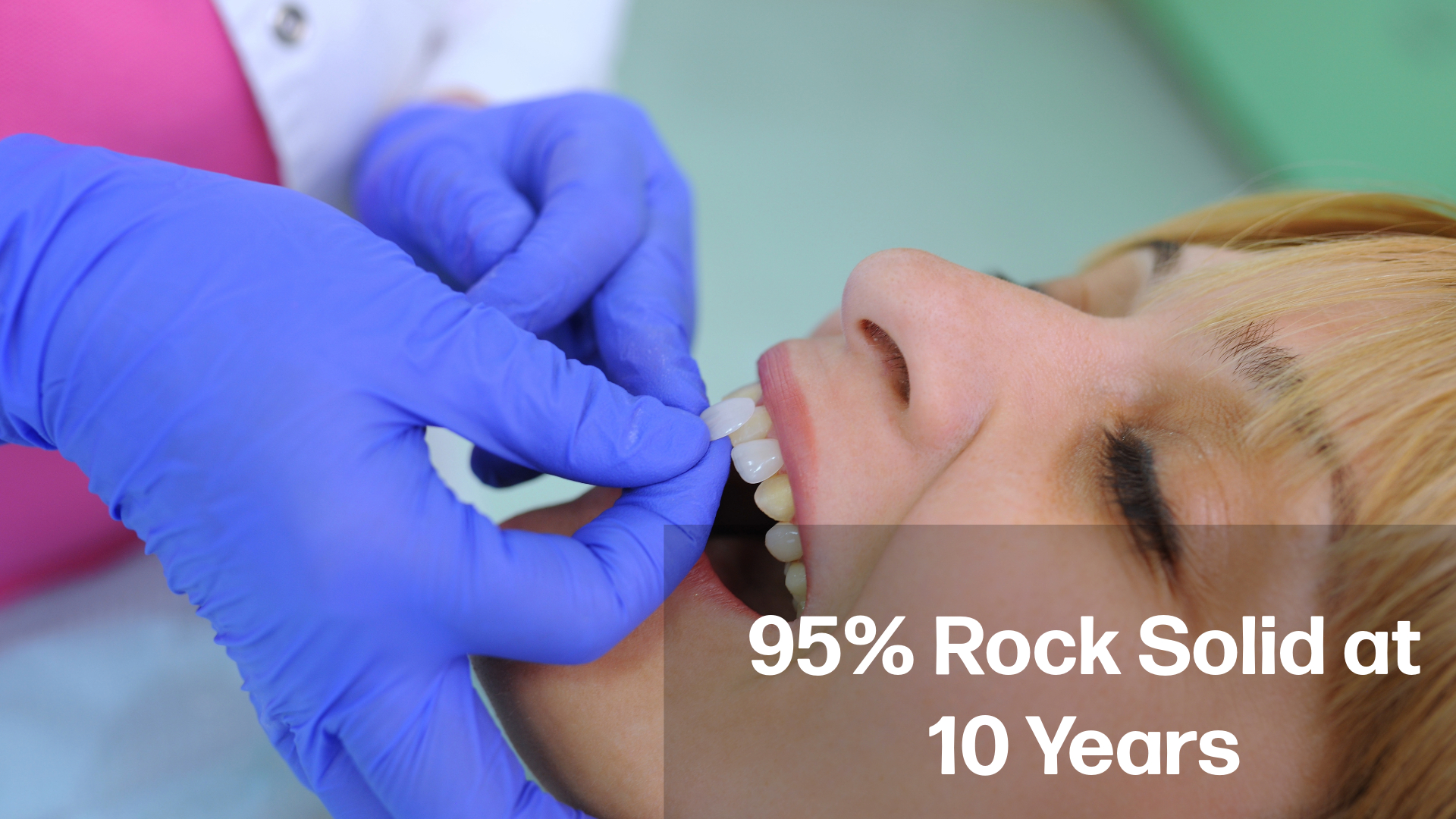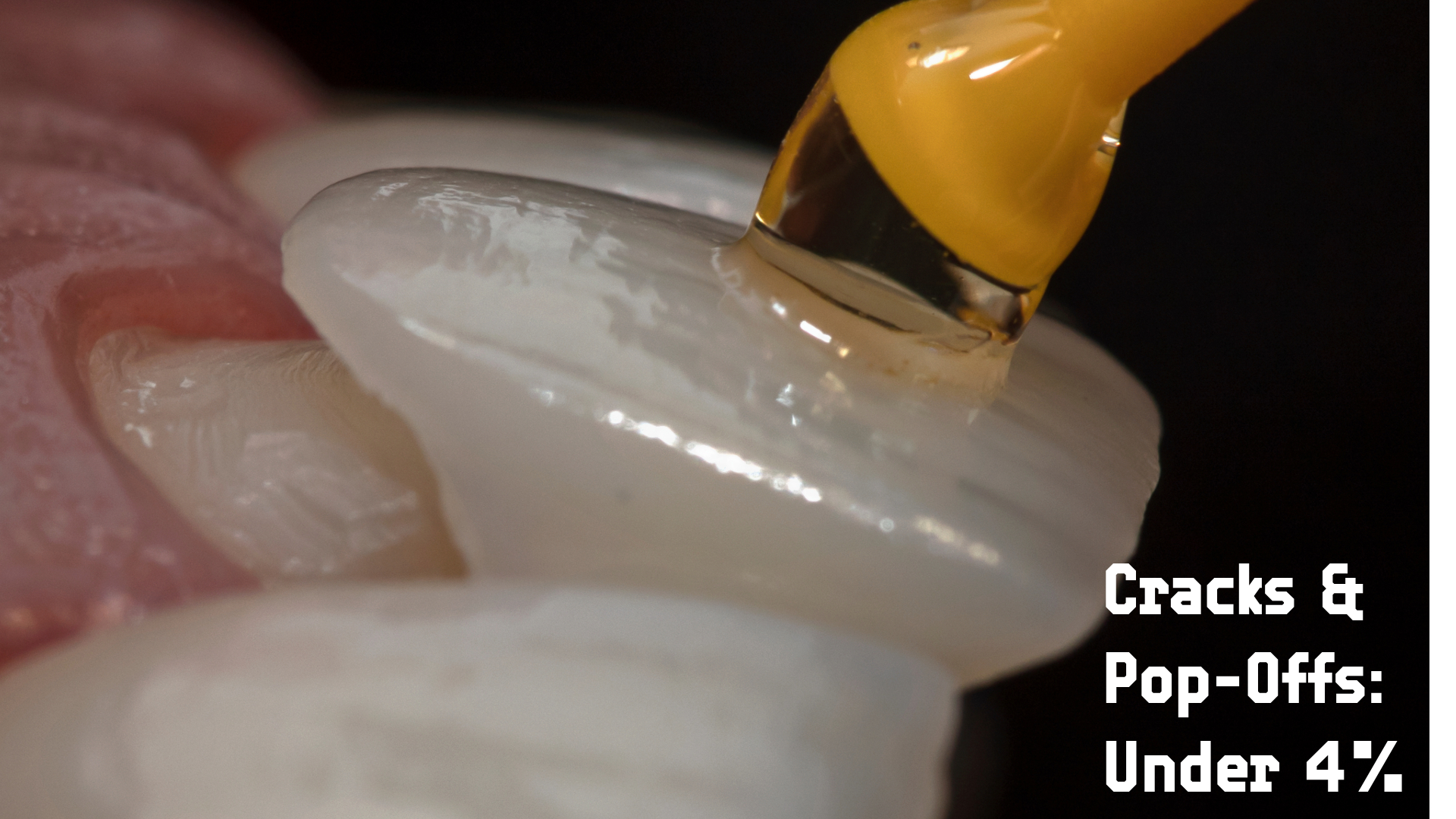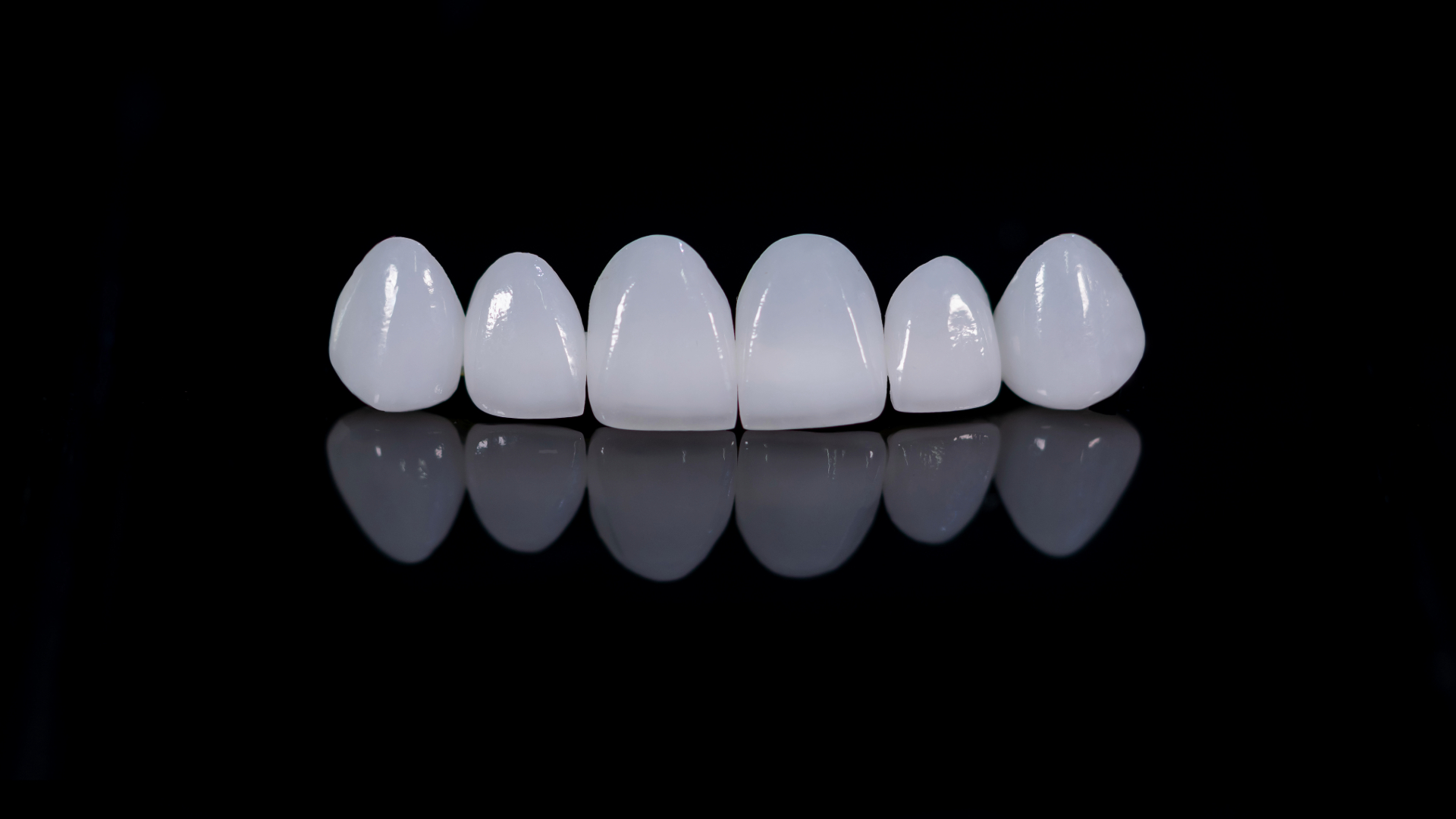
Veneers (porcelain laminates applied to the tooth surface) are thin porcelain sheets bonded to the front surface of the teeth, which are frequently preferred in aesthetic dentistry. But how long do these aesthetic and functional restorations last? Below, information about the lifespan of porcelain lamina veneers and the factors affecting this is presented based on current literature. Throughout the article, the durability of veneers, common causes of failure and ways to extend their life will be discussed.
Lifespan of Porcelain Lamina Veneers
The typical lifetime of porcelain veneers is generally reported to be between 10 and 15 years. With proper oral care and regular check-ups, it has also been observed that they can be used longer in some patients without any problems. According to current studies, the 10-year success rate of porcelain lamina veneers is around 90-95%. For example, systematic reviews indicate that 95% of veneers remain functional at the end of 10 years, while this rate decreases to around 85% at the end of 15 years.

There are similar findings in studies on long-term results: In one study reporting 93% success after 10 years, the same veneers were still in use approximately 83% of the time after 20 years. However, since follow-ups longer than 20 years are limited, it is difficult to make a precise life expectancy prediction after 20 years. In other words, although porcelain veneers are very durable, they should not be seen as a permanent solution for life; they may need to be renewed after a certain period of time.
Factors Affecting the Lifespan of Veneers
The longevity of a porcelain veneer depends on many factors. Below, the main factors affecting the longevity of veneers are explained in a simple way:
- Oral and Dental Care (Hygiene): Regular and proper oral care plays a critical role in prolonging the life of veneers. Twice-daily tooth brushing, daily flossing, and regular dental check-ups prevent the development of gum disease and secondary caries and maintain the bond between the veneer and the tooth. If oral hygiene is not taken care of, edge leaks and caries can develop, causing the veneer to fall off or caries to form underneath.
- Material Selection: The type of material used in veneers also affects durability. Porcelain lamina veneers are much longer lasting and resistant to discolouration than composite resin veneers. Since porcelain material is made of high quality ceramic, it resists abrasion and staining; when applied correctly, it maintains its brightness for years. Composite veneers, on the other hand, may require renewal within 5-7 years because wear and discolouration occur over time. Therefore, porcelain veneers are generally more advantageous in terms of aesthetics and longevity.
- Dentist's Skill and Application Technique: Preparation and bonding of veneers are procedures that require high precision. The dentist's correct preparation, leaving sufficient enamel tissue and following a high-quality bonding protocol directly affect the success of the veneer. In cases where minimally invasive preparation is used and only enamel is worked on, the long-term retention of veneers bonded to enamel is much higher. Veneers placed with the careful work of an experienced dentist can be used for a longer period of time without any problems, as the edge fit will be perfect.

- Tooth Condition (Live or Root Canal Treatment): The fact that the tooth to which the veneer will be applied is alive (vital) can also affect the success. Since root canal treated (devital) teeth may become more fragile and change colour over time, the risk of failure of veneers on them may increase slightly. In the literature, it has been reported that veneers on living teeth have a higher success rate than on previously root canal treated teeth. The reason for this is that the amount of healthy enamel remaining in living teeth is higher and a stronger bonding is provided during bonding. Additional measures (e.g. strengthening with fibre post) can be taken by the dentist considering the condition of the tooth.
- Dental Closure and Bruxism: The patient's jaw closure relationship (occlusion) and parafunctional habits also play an important role in veneer life. In individuals with teeth clenching or grinding (bruxism) habits, porcelain veneers are subjected to much higher forces than normal. This can lead to cracks or fractures in the veneers, shortening their life span.
Similarly, if the patient has bite disorders (e.g. deep bite, crossbite or edge-to-edge contact), excessive stress may be placed on the edges of the veneers. In such cases, the dentist may prescribe bite-regulating treatments or recommend the use of dental aligners (night aligners) at night. In bruxism patients, studies show that veneers last longer in patients using night plates. In short, a controlled force distribution and prevention of parafunctions help the veneers to last for years without breaking.
- Habits of Use (Nutrition and Bad Habits): The longevity of the veneers also depends on the daily habits of the patient. If there is a habit of biting hard objects or using the teeth as a tool, the veneers may be damaged. For example, breaking or opening hard objects such as ice, nuts/peanut shells, pens, etc. with the teeth may cause cracks in thin porcelain laminates. Sticky and very hard foods should be avoided; large hard foods should be cut into small pieces. Bad habits such as nail biting and pen biting can also weaken the veneers over time. If the patient stops or minimises these habits, the life of the veneers will be significantly prolonged.
How Long Do Front Tooth Veneers Last
Porcelain lamina veneers are most commonly used in the aesthetic rehabilitation of anterior teeth (anterior incisors and canines). The success of veneers on the anterior teeth is quite high when applied with the correct indication, because the anterior teeth are exposed to less chewing force compared to the posterior teeth. This lower force environment is a factor that reduces the risk of cracking or fracture of veneers. As a matter of fact, long-term follow-ups in the literature mostly include veneers applied to the teeth in the anterior region and the results are satisfactory (high success rates over 10 years are mentioned).

The most important factor in the success of anterior tooth veneers is that they are properly bonded on intact enamel tissue. If the enamel layer of the anterior teeth is preserved, the porcelain laminates are clamped to the tooth surface and do not come off for years. On the other hand, the bite relationship of the patient's teeth in the anterior region should also be taken into consideration. Especially if there is a closure in which the upper and lower anterior teeth come end to end, or if the person tends to bite hard objects with his/her front teeth, there is a possibility that the edges of the veneers may be hit and damaged.
For this reason, the physician should analyse the force distribution well according to the individual situation of the patient and, if necessary, take measures such as increasing the thickness of the porcelain and using force-breaking splints. As a result, anterior tooth veneers applied in the right case provide both a dramatic aesthetic improvement (as seen in the photo on the right) and with proper care and protection can be used for many years without any problems.
Failures in Veneer Applications
Porcelain lamina veneers are thin porcelain sheets about half a millimetre thick (on the side, front and back of a veneer for an upper front tooth). Although they are thin, they are durable when strongly bonded to the enamel. Nevertheless, it should be kept in mind that porcelain material can be inherently brittle under excessive force. Failures in veneer applications are rare, but they can occur and are usually of several types. The main types and causes of veneer failure can be summarised as follows:
- Fracture or Cracking: The most common problem with porcelain veneers is fracture or cracking of the material. Since veneers are very thin, they can break, especially when exposed to trauma or high pressure.
In studies, it has been reported that fractures constitute the majority of complications seen in porcelain veneers (approximately 3-4% of veneers have been reported to fracture in a 10-year period). While small porcelain fractures can sometimes be locally polished and continued to be used, the veneer may need to be completely replaced in large fractures. To minimise the risk of fracture, the patient is advised not to bite hard objects and to use a night plate if bruxism is present.

- Detachment of Adhesion (Debonding): As a result of the bonding agent or cement that holds the veneer to the tooth dissolves or breaks over time, the veneer may separate from the tooth. This is called debonding. Fortunately, this problem is very rare in porcelain veneers glued with the correct technique. In 10-year follow-ups, the rate of self-dislodgement of veneers is reported to be less than 1%.
If the veneer is dislodged while maintaining its integrity, it is usually possible to be reattached by the dentist. However, if caries has developed underneath or if the porcelain has broken when falling, a new veneer may be required. The best protection against bond rupture is to prepare the surfaces very well in the first application and to use high quality adhesive.
- Discolouration: Porcelain laminates are restorations with high colour stability due to their material properties. In other words, they are more resistant to discolouration from external factors such as tea, coffee and cigarettes compared to natural teeth. For this reason, a properly polished porcelain veneer retains the colour of the first day it was worn even after many years. However, in some cases, minimal discolouration or edge staining may occur. In particular, the adhesive resin at the edge of the veneer may become slightly discoloured over time or superficial staining may occur at the gingival margin due to plaque build-up.
Fortunately, such discolouration can usually be removed by professional cleaning and polishing. It is important to note that if gingival recession occurs or a gap forms at the edge of the veneer, discolouration and aesthetic problems may occur in that area. At regular check-ups, the dentist will help you maintain the aesthetics of the veneer by cleaning and removing such initial problems.
- Secondary Caries (Secondary Caries): Another reason for failure is the reoccurrence of caries around a veneered tooth or in the marginal area where it is bonded. This is usually associated with inadequate oral hygiene. If plaque accumulation and gingival problems are present, bacteria may accumulate at the junction of the veneer and the tooth and initiate caries. Secondary caries formation is a rare problem in porcelain veneers according to the literature (less than 1% in 10 years).
However, it should be taken seriously when it occurs; if detected at an early stage, the veneer can be saved with minor filling corrections. An advanced caries may require removal of the veneer, treatment of the caries and then a new veneer. For this reason, it is very important that patients with veneers pay extra attention to oral care and have their initial caries caught early with regular check-ups.
Apart from the above-mentioned problems, there are some more rare problems. For example, problems such as sensitivity or damage to the dental pulp (loss of vitality of the tooth if too deep preparation has been made or trauma has occurred), aesthetic incompatibilities due to gingival recession or matting on the porcelain surface may also occur. However, with proper case selection, correct technique and good care, the vast majority of porcelain lamina veneers serve for many years without such complications.
Frequently Asked Questions (FAQ)
Do porcelain veneers last a lifetime?
Porcelain veneers are very durable, but they are not expected to remain unchanged for life. On average, they have a trouble-free lifetime of 10-15 years; with good care, there are cases of 20 years and more. However, there is insufficient scientific data on use for longer than 20 years. Since there may be changes in the gum level, wear or discolouration of the natural tooth over time, the veneers may need to be replaced around 20 years. Although they are not expected to last a lifetime, the fact that the veneers can be renewed when necessary makes this treatment sustainable in the long term.
Do veneers change colour over time?
High quality porcelain veneers are extremely resistant to external factors and do not change colour easily. Since the surface of porcelain is glassy and smooth, it is less affected by factors such as coffee, tea and cigarettes compared to natural teeth. In this way, the colour of the veneers remains largely constant even after years. However, there may be slight discolouration of the adhesive material at the edges or at the tooth-tissue junction over time. This is usually at a level that can be removed with regular scaling and polishing. If the colour of the tooth on which the veneer is applied changes over the years (for example, darkening of the dentin with age), a very slight shade difference can be felt, but the porcelain itself is very stable against discolouration.
Can a fallen or removed veneer be reattached?
Yes, in most cases it is possible to reattach a porcelain veneer if it has fallen off on its own and is found to be unbroken. In such a case, you should not panic, keep the veneer intact if possible and consult your dentist. Your dentist will assess the fallen veneer and the underlying tooth. If the veneer is intact and there is no serious problem with the underlying tooth, it can be reattached with special adhesives. The reattachment process requires the same care as the first application; the surfaces are cleaned and prepared and the veneer is bonded to the tooth with a strong adhesive cement. However, the factor that caused the veneer to fall off should also be investigated: Was there a problem with the caries or adhesive interface, is the patient clenching his/her teeth, etc.? If the underlying caries has developed, the caries is treated first; if the veneer is broken, a new one must be made because the same veneer cannot be used. In general, veneer dislodgement is not very common and is usually a correctable problem.
What should I do to ensure the longevity of my veneers?
There are some simple precautions you can take to ensure that your veneers last as long as possible:
- Regular dental check-ups: Going to the dentist every 6 months is important to monitor the condition of the veneers. Your dentist can intervene at an early stage by checking the veneers for wear, edge leakage or gingival problems and solve potential problems before they grow.
- Good oral hygiene: Although veneers do not require special care, you should not neglect your daily oral hygiene as there are natural teeth underneath. Brush your teeth twice a day with a fluoride and non-abrasive toothpaste, floss or use interdental brushes to prevent plaque build-up on the edges of the veneers. This minimises the risk of gingivitis and edge decay.
- Avoid hard foods: Although veneers are hardy, avoid overly forceful movements such as opening packages with your teeth, breaking ice, chewing hard candies. Be careful when biting hard foods such as apples and carrots; if possible, cut them into small pieces. Very sticky sweets can also dislodge the vein, so you should be cautious when consuming them.
- Don't use night guards: If you have a habit of clenching or grinding your teeth (especially at night), your dentist can make you a special night guard. This protects your teeth during sleep, preventing both the wear of natural teeth and the cracking/cracking of veneers. Thus, your veneers can remain intact for a much longer period of time.
- Stain protection: Although porcelain is not very stain-resistant, if you consume excessive amounts of coloured foods (coffee, tea, red wine), it is a good habit to rinse the mouth with water or brush the teeth afterwards. If you smoke, quitting for both general health and dental aesthetics will also help the veneers to maintain their beauty in the long term.
Thanks to these precautions, you can maximise the life of your porcelain lamina veneers and enjoy using your investment for many years with the aesthetics of the first day.
Bibliography
- AlJazairy YH. Survival Rates for Porcelain Laminate Veneers: A Systematic Review. Eur J Dent. 2020; 15(2):360-368.
- Morimoto S, Albanesi RB, Sesma N, Agra CM, Braga MM. Main clinical outcomes of feldspathic porcelain and glass-ceramic laminate veneers: a systematic review and meta-analysis. Int J Prosthodont. 2016; 29(1):38-49.
- Alenezi A, Alsweed M, Alsidrani S, Chrcanovic BR. Long-Term Survival and Complication Rates of Porcelain Laminate Veneers in Clinical Studies: A Systematic Review. J Clin Med. 2021; 10(5):1074.
- Beier US, Kapferer I, Burtscher D, Dumfahrt H. Clinical performance of porcelain laminate veneers for up to 20 years. Int J Prosthodont. 2012; 25(1):79-85.
